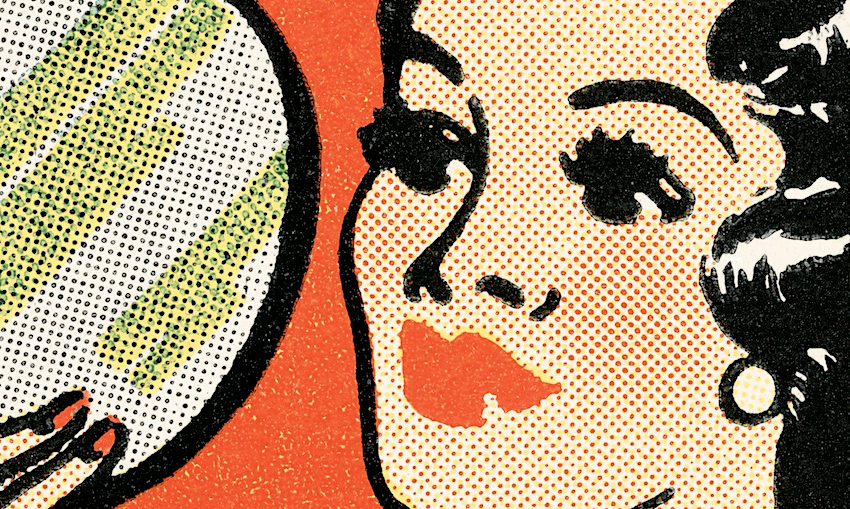Hospitals should be a place of welcome and healing. But for gender-diverse people and their families, going to the hospital can feel like walking into a linguistic minefield.
While a child was being treated at a New Zealand hospital last month, a health professional kept using the wrong gender pronouns for them. After the child politely corrected her for the fourth time, the health professional hit them. The incident is currently under investigation.
When I tell this story, people are shocked – except for my rainbow friends, who are not shocked at all. It’s no surprise to them that someone should experience gender-based linguistic discrimination in healthcare settings, even to the point of violence.
The 2019 Counting Ourselves survey of transgender and non-binary people in New Zealand found that less than half of participants (46%) reported having GPs who consistently used the correct names and pronouns when referring to them and over a third (36%) had avoided seeing a doctor because they were worried about disrespect or mistreatment.
Parents of gender-diverse kids tell me of health professionals misgendering their children in medical reports, using their wrong name and pronouns in consultations and on wards, sending them letters with incorrect titles (e.g. Miss instead of Master), listing their gender identity as a “problem”, using outdated terms to describe them, asking them what their name used to be, and outing them as transgender in contexts where there was no need for others to know.
Which health professionals? Doctors, nurses, ambulance officers, receptionists, psychologists, pharmacists, even the paediatric endocrinologists responsible for providing gender-affirming care.
These linguistic acts don’t just indicate lack of respect for patients and compromise access to healthcare. They can also trigger gender dysphoria, the extreme discomfort many gender-diverse people feel when their gender identity does not match the gender they were assigned at birth.
Exclusionary language literally hurts people.
Parents know this and take actions to protect their children, like hiding hospital letters from them. One told me she no longer lets her child check the letterbox, just in case.
When people think of access to healthcare for gender-diverse people, they may think of puberty blockers, hormones, surgery, and other forms of gender-affirming healthcare. But, like everyone, gender-diverse people go to hospital for all sorts of reasons – injuries, illnesses, infections – and when they do, they deal with a system they cannot trust to speak to and about them respectfully.
In its 2020 briefing to the incoming minister of health, PATHA (the Professional Association for Transgender Health Aotearoa) stated that gender-diverse people need reliable access to gender-affirming healthcare but also “a wider health system that delivers safe, equitable, effective care for transgender people”.
Many incidents parents have told me about took place when children were receiving healthcare unrelated to gender. Parents of gender-diverse kids learn to steel themselves going into the hospital – not because of the health issue they are going for, but because of their fear about how their children will be addressed.
Will my child’s gender marker remain updated on the computer system? Will their correct name be used? Will the doctors and nurses use the right pronouns? Or will an already difficult day for us be compounded by disrespectful and harmful communication?
The Human Rights Commission’s 2020 Prism report found that “for people with a diverse sexual orientation, gender identity and expression, or sex characteristics, health professionals are often not the trusted authorities they are supposed to be, but a source of anxiety, stress, and trauma”.
Hospitals should be a place of welcome and healing. But for gender-diverse people and their families, going to the hospital can feel like walking into a linguistic minefield.
A simple way that healthcare providers can make gender-diverse patients feel comfortable and respected is to use gender-inclusive language.
The Ministry of Health’s advice on delivering health services to transgender people states that: “All health providers, both in community and hospital settings, have a duty to deliver services that are respectful of our transgender community. Use the patient’s correct pronouns (he/him, she/her, they/them, etc) and preferred name. If you are not sure how your patient wishes to be addressed, politely ask.”
Small linguistic acts like this – and accompanying visual signals such as rainbow badges and posters in clinics – may seem insignificant but they are hugely impactful for gender-diverse people and their families, making them feel seen, heard and safe.
When a health professional genders a child correctly, the whole mood of the room can change, as if everyone can breathe more easily. Everyone wins when the tone of a medical consultation is calm rather than on a knife edge.
Some health professionals are doing a fantastic job in using gender-inclusive language. Others appear to find the whole thing peripheral and ridiculous. Still others are sympathetic but very nervous about getting it wrong. They worry that they will make mistakes, that these mistakes will be jumped upon, and that their language use will reflect badly on them.
What matters most is genuinely trying. Mistakes happen and, when they do, the best approach – for health professionals and all of us – is to self-correct and move on. Don’t excessively apologise, putting the burden on the gender-diverse person to reassure you. If a gender-diverse person corrects you when you get it wrong, thank them. Don’t make it about you. And – how extraordinary that this needs saying – don’t hit them.
Training medical professionals in gender-inclusive language is sorely needed across the health system. But institutions rarely drive social and linguistic change. If sustained language change is to occur, it’s going to enter the hospital from the streets, and that’s where the rest of us come in.
Through our everyday language choices, we can each normalise gender-inclusive language in our own lives and encourage others to do the same. Language change starts with a few individuals, it spreads, and then it settles into a new normal. Together we can create a world where accessing healthcare as a gender-diverse person doesn’t mean suiting up for a linguistic battle at the same time.
Julia de Bres is a senior lecturer in linguistics at Massey University





